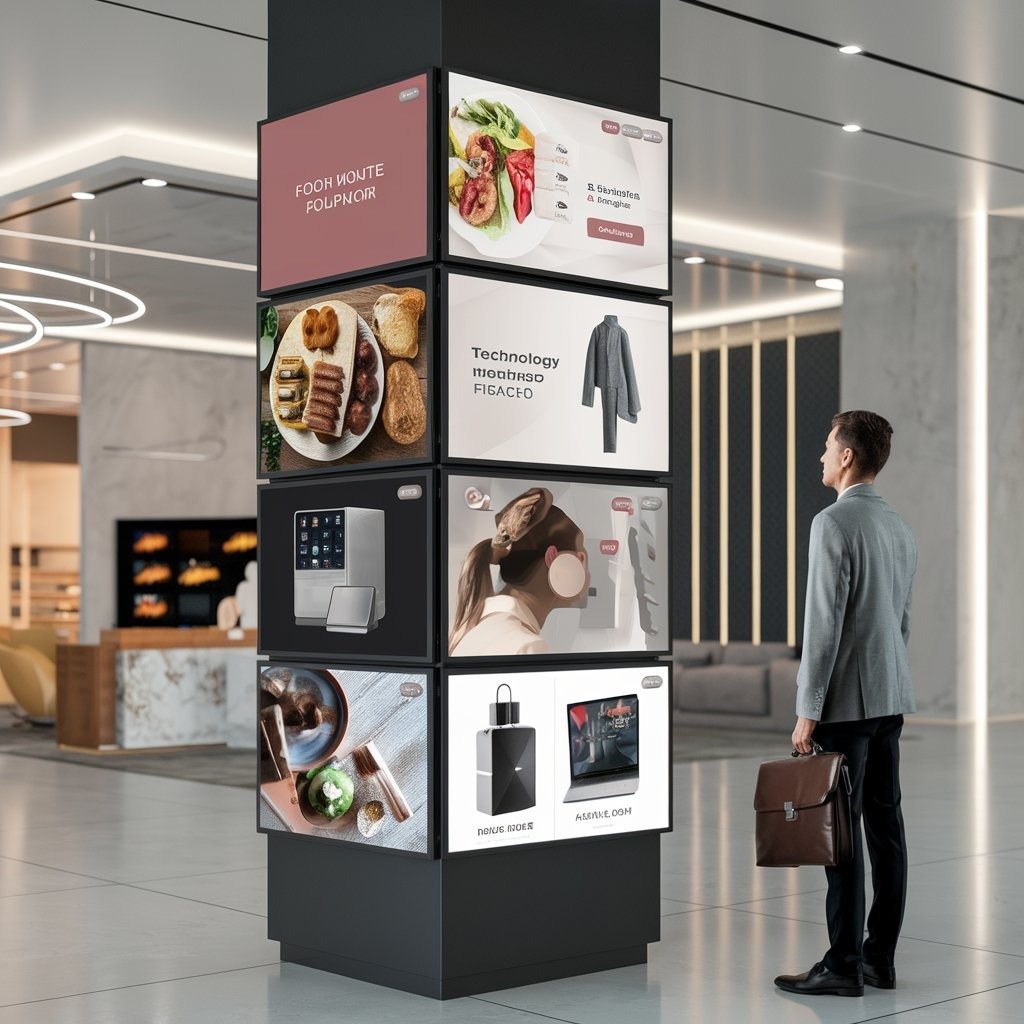Maximizing Audience Interaction with Vertical Digital Signage: A Comprehensive Strategy
In an era where grabbing attention is increasingly challenging, businesses are continually searching for innovative ways to connect with their audiences. Whether in retail, corporate settings, or public venues, vertical digital signage has emerged as a cutting-edge solution for creating impactful interactions. Unlike traditional horizontal screens, vertical digital displays provide a fresh perspective, helping to deliver information in a visually captivating manner. When strategically implemented, these displays can significantly improve brand visibility, audience engagement, and overall customer satisfaction.
The Benefits of Vertical Digital Displays
Vertical digital signage stands out because it mirrors how most people now consume information on smartphones, which are held vertically. This natural alignment with mobile habits makes vertical screens more engaging and familiar to users. Additionally, vertical displays maximize the use of vertical space, making them especially useful in areas where traditional horizontal screens may not fit or be as effective.
Whether it’s fashion retailers, airports, restaurants, or event spaces, vertical digital signage has found widespread use. It offers a dynamic and versatile way to present promotional content, multimedia, and important announcements. But beyond its aesthetic appeal, vertical signage also offers several functional advantages that make it suitable for many industries.
When evaluating digital signage price, businesses should think beyond the initial expense and consider the long-term benefits. Although prices vary based on factors such as screen size, resolution, and customization, the return on investment (ROI) is usually worth it. Vertical digital signage saves on printing costs, allows remote updates, and integrates real-time data, making it a highly cost-effective choice over time.
Crafting Compelling Content for Vertical Signage
The success of vertical digital signage hinges on the quality of the content it displays. Simply setting up a screen isn’t enough—what matters most is how well the message resonates with the audience. Retail stores showcasing new products, hotels guiding guests, or offices sharing key information must ensure that the content is clear, engaging, and relevant.
Content for vertical signage should make full use of the display’s unique dimensions. Portrait-oriented images, vertical videos, and tall infographics work particularly well. This helps avoid the cramped or awkward look that comes with repurposing horizontal content for vertical displays. To maintain viewer interest, it’s also important to refresh content regularly.
Incorporating interactive elements, such as touch capabilities or QR codes, can further increase user engagement. These interactive features allow viewers to participate directly, creating a personalized experience. For example, in a retail setting, customers can scan a QR code on a vertical screen to view additional product details, read reviews, or access special discounts, encouraging them to explore more.
Strategic Placement for Maximum Visibility
Positioning vertical digital signage in the right location is crucial for capturing attention. Installing the display in high-traffic areas ensures more people will notice it, but placement within the viewer’s natural line of sight is just as important. Displays at eye level or slightly above are more likely to draw attention than those positioned too high or low.
In retail, vertical signage near entrances or checkout areas can influence purchasing decisions. In public spaces such as malls or airports, vertical displays are ideal for providing wayfinding information, like maps, directions, or safety guidelines. Their slim design allows them to fit into spaces where horizontal screens may not be suitable, making them a practical solution in a wide variety of environments.
In addition to serving as information hubs, vertical digital signage can also complement the architecture of a space. Whether it’s a sleek, wall-mounted screen or a massive digital billboard, vertical displays can enhance the overall ambiance while conveying important messages.
Personalizing Content Through Data Insights
One of the most exciting aspects of digital signage, especially vertical formats, is the ability to personalize content using data. With advanced software, businesses can customize content based on location, time of day, audience demographics, and even live events. For example, a restaurant could promote breakfast items in the morning and switch to lunch specials later in the day to appeal to different customer groups.
Real-time data integration also allows for more relevant and engaging content. Vertical digital signage can display live news, social media updates, or even current weather conditions. Using audience measurement tools or facial recognition, the system can detect who’s viewing the display and adjust content accordingly, making the information more personalized and impactful.
The Future of Vertical Digital Signage
As technology continues to advance, vertical digital signage is poised to become even more interactive and immersive. Emerging technologies like augmented reality (AR) and artificial intelligence (AI) will provide businesses with new opportunities to create memorable customer experiences. Imagine a vertical screen in a retail store allowing shoppers to virtually try on outfits or an AI-powered menu that makes personalized meal recommendations based on previous purchases.
Cloud-based management systems will also play a growing role, allowing businesses to control and update their digital signage content remotely. This enables companies to respond to changes quickly, whether adapting to market trends, customer feedback, or breaking news, further enhancing the flexibility and effectiveness of vertical digital displays.
Conclusion
Vertical digital signage is a modern, strategic tool for maximizing audience engagement. It offers businesses a flexible platform to deliver information, enhance brand visibility, and create interactive, personalized experiences. By focusing on content that suits the vertical format, placing displays in high-visibility locations, and leveraging data to personalize messages, companies can make the most of this powerful technology. As digital signage technology continues to evolve, vertical displays will remain a vital component of the future of communication, providing endless opportunities for brands to connect with their audience in meaningful and impactful ways.
Maximizing Audience Interaction with Vertical Digital Signage: A Comprehensive Strategy






